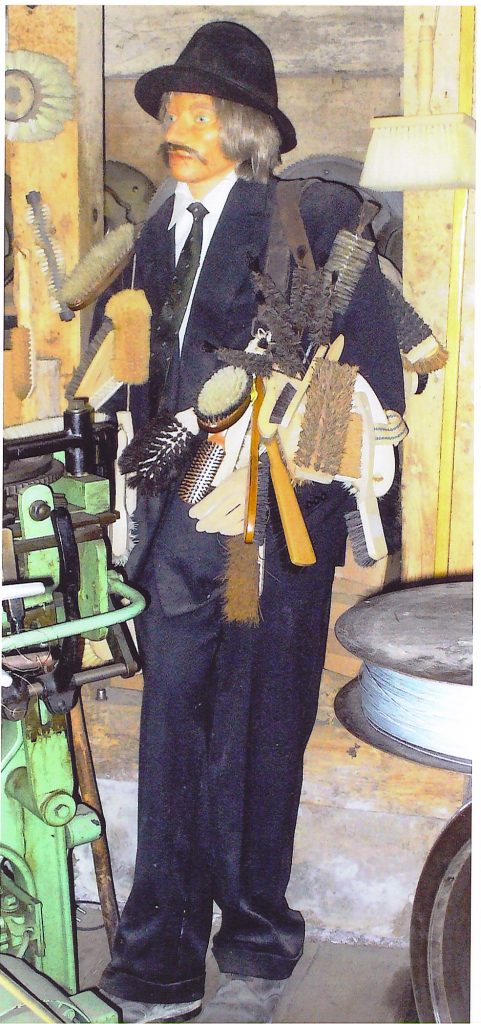Brush Museum Todtnau: Introduction of the Storyteller
The steps and process for the production of brushware was shared between brushmakers, conditioners of bristles and wood workers who mainly lived in the villages close to Todtnau, Germany. The brush handles were produced on turning machines which were moved by waterpower. The purchase of bristles and hair at home and abroad such as France and Switzerland became a separate branch of trade. The travelling salesmen played a major role. In the early stages they only went to Switzerland or the upper Rhine. At different places they built depots to sell brushes directly at annual fairs or from door to door.
The first exports to America started in 1854 and the transition from production in the homes to pre-industrial production in the first factories began. Within these years there were about 1,000 people in Todtnau and the surrounding villages producing brushes and the necessary brush handles. In 1873, the world-exhibition was held in Vienna, Austria, and the brushmakers from Todtnau participated in this fair as exhibitors representing the collective brushmakers from the Black Forest.
With the rise of the industrial revolution in the second half of the 19th century, the first trials of brush filling machines to produce brushes took place. In Todtnau, Oskar Faller was the initial pioneer in the industrial production of brushes. With his brothers Eduard and Ernst, they managed the company Jos. Ed. Faller which had been founded by his father. They obtained diverse brush filling machines from abroad; however, they did not know exactly how these worked. They engaged a young engineer from Bohemia: Anton Zahoransky. He is credited with several important industry inventions.

Soon, a new material factored into the evolution of brushmaking: plastic. So, as the industry had previously evolved from brush production in homes to true industrial production, the industry shifted from wood only brush products to expand to brushes made of plastic. The sales of brushes expanded significantly and the brushes and brush making machines from Todtnau were presented worldwide at major trade fairs.
For 250 years, the brush making industry has been an essential part of the economic activity in Todtnau. Several innovative companies that serve the world market for the brush making industry still operate in the area and the worldwide presence is likely due to all of those companies utilizing machines that have been constructed and manufactured by eight machine factories in Todtnau. The worldwide market leader Zahoransky still has the main plant in Todtnau.
With the rich history and tradition for the brush industry in Todtnau, it is the fitting location for a brush making museum. With that in mind, the museum will offer Lorenz Wunderle as the storyteller for the brush legacy in Todtnau. Wunderle was the first known brush salesman. He will report through modern media the story of the brushes from Todtnau and the process from manufacturing in 1770 to the present day industry approach.
The association Kulturhaus Todtnau is happy to welcome visitors to the newly established brush museum set to open May 9, 2020.
Text and photo provided by Kulturhaus Todtnau


